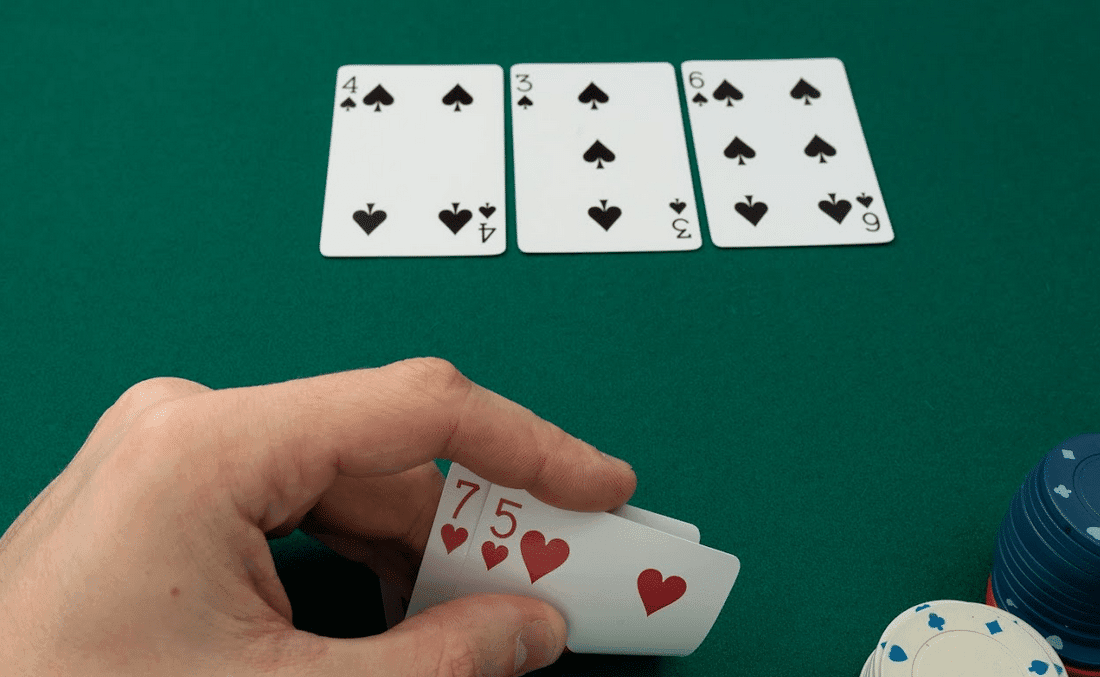
Generally, the winner of any poker hand is the player who has the highest-ranking when all the cards are shown at the end of your hand (called a “showdown”), or the player who bets last and does not call, who wins without having to showdown.
Not sure if a flush will win you a straight? Not sure how to make a whole house? Information about hand rankings can be found in the table below (click here for more details). Stronger hands are ranked in the top row from left to right, while weaker hands are only those with high cards.
In the poker game, there are specific forced bets, such as the big and small blinds in poker and Omaha. These forced bets are the initial pot of poker and are the initial incentive for the player to win the hand. Subsequent actions in the betting rounds will further increase the size of the pool.
Dealing and betting rounds
After the first card is dealt, players take turns acting clockwise around the table.
When it is their turn to act, each player can usually take one of the following actions.
- Check – A check is a denial of the opportunity to initiate a bet. An assessment can only be made if no bets have been placed on the current row and the action is passed clockwise to the next person in the row. If all active players check, they remain in hand, and the round ends.
- Bet – If no other player bets during the current turn, one player may bet. After betting, the other player must call an amount equal to the chance to keep their hand.
- Fold – A player who folds abandons his hand and cannot win again or act on the current hand.
- Call – If another player bets on the current turn, the player may call. In this case, the player making the call must bet an amount equal to the maximum bet.
- Raise – If another player bets on the current round, the player may raise. The player who raises must be the same amount as the highest bet and then a higher amount. Subsequent players can hold their hand by calling the raise or submitting again.
Different types of poker have additional betting rounds. Texas Hold’em and Omaha are two of the most popular poker games in the world and consist of four betting rounds: pre-flop, flop, turn and river.
The pre-flop betting round begins after all players have received their hole cards but before the public cards are dealt. Betting on the flop is done after the first three shared poker cards are dealt, the turn is done after the fourth general card is sold, and the river is done after the fifth public card is dealt.
In each betting round, betting continues until each player calls or folds (if no betting takes place, the round ends when each player checks). When the betting round ends, the next deal/bet round begins, or the hand ends.
Here is an example of Texas Hold’em after all the cards have been dealt. In this way, a player can use any of his two hole cards and any of his five public cards to make the best five-card hand he can. In this case, two hole cards and three public cards can be used to create a straight.
Showdown
Once the final bet or raise has been made in the last betting round, the showdown takes place. The remaining active players must show or “announce” their hands, and the player with the best hand wins the pot.
Players tend to show their cards in order rather than all at once. Multiple players can share a pot. The distribution of the bank depends on the rules of poker and the ranking of each player’s hand against their opponent.
Betting Limits
A betting limit is the amount of money a player can open or raise. In general, there are three types of poker games: No Limit, Pot Limit, and Fixed Limit.
- No Limit – In a poker game with a no-limit betting structure, each player can bet or raise his entire chip stack (the total number of chips he holds at the time) in any betting round until it is his turn.
- Pot Limit – In a poker game with a Pot-Limit betting structure, each player may bet any amount up to the total pot size at that time.
- Fixed Limit – In a poker game with a fixed limit betting structure, each player can call, bet or raise a fixed amount. The fixed amount for a betting round is predetermined.
In no-limit and pot-limit games, the “stakes” column in the PokerStars lobby shows the small and big blinds for that game, while in mixed games, the stakes demonstrated in the lobby are the betting amounts for the limit game, not the pot-limit and pot-limit games. In no-limit rounds, the blinds are usually half the blinds of the limit game.
Table Stakes and All-in Bets
You may have seen poker scenes in movies or on TV where players with more chips than they have at the table are forced to bet their watches, cars, or other assets in order to stay in the game. This can make for great drama, but that’s not how real-life poker works most of the time!.
All of the games on our site are played on a “table” basis. This means that only the chips at the start of each hand are available for use in that hand. There is an application of the table betting rules called the “all-in” rule, which states that you cannot make a poker hand lose just because you do not have enough chips to call.
Any poker player not having enough chips to call is declared all-in. The player is entitled to a portion of the pot up to the point of the final bet. Any further action involving other players is done with a “side bet” where the all-in player has no right to win. If more than one player goes all-in on a hand, multiple side bets may be made.
